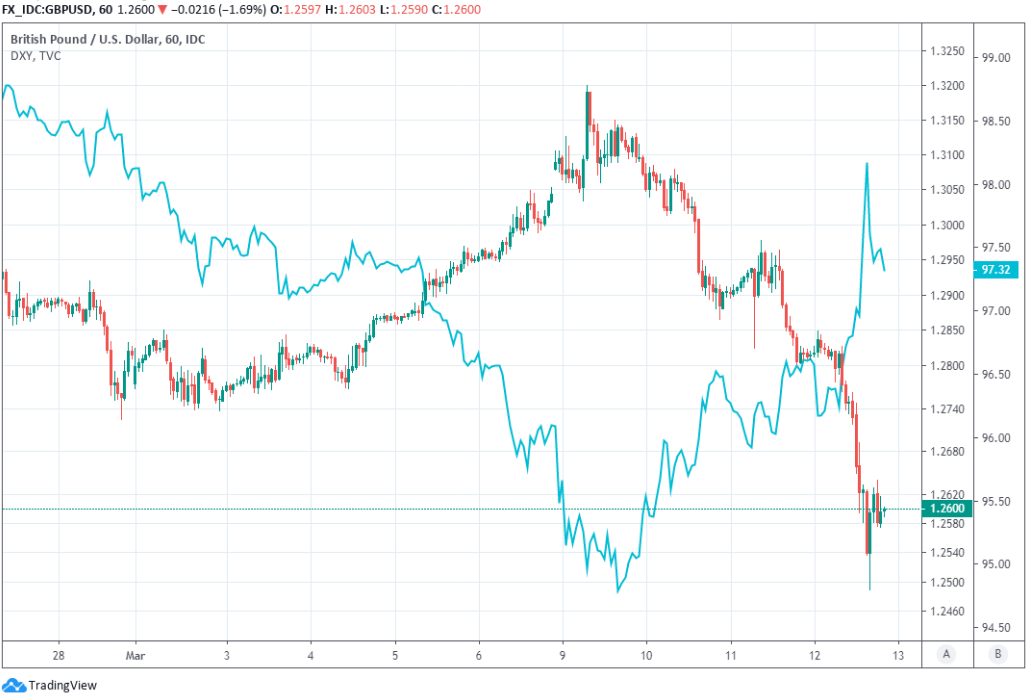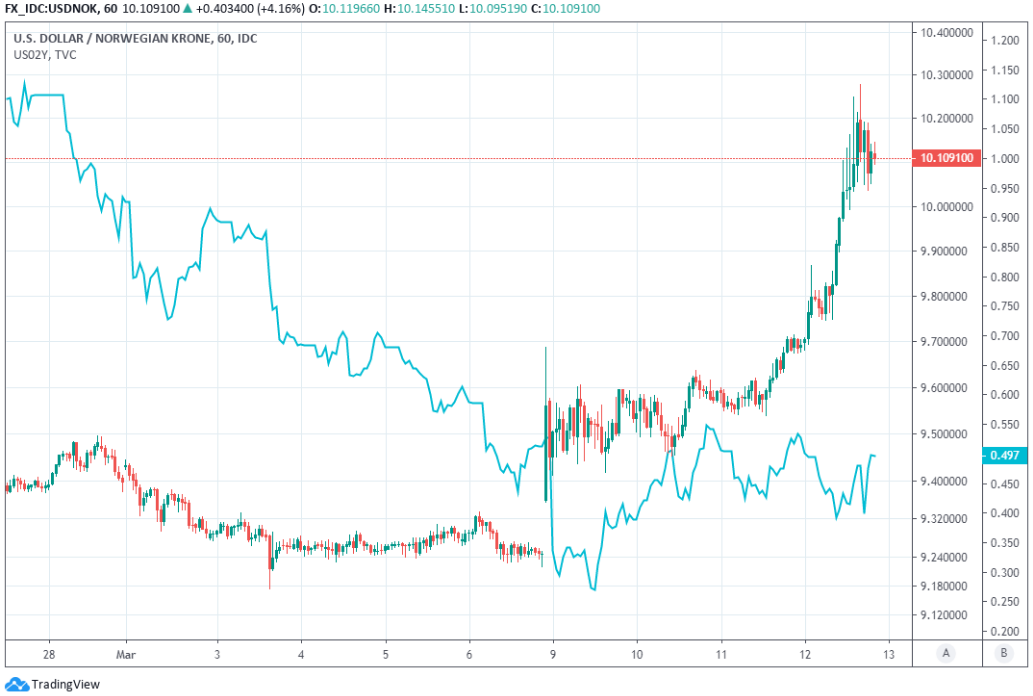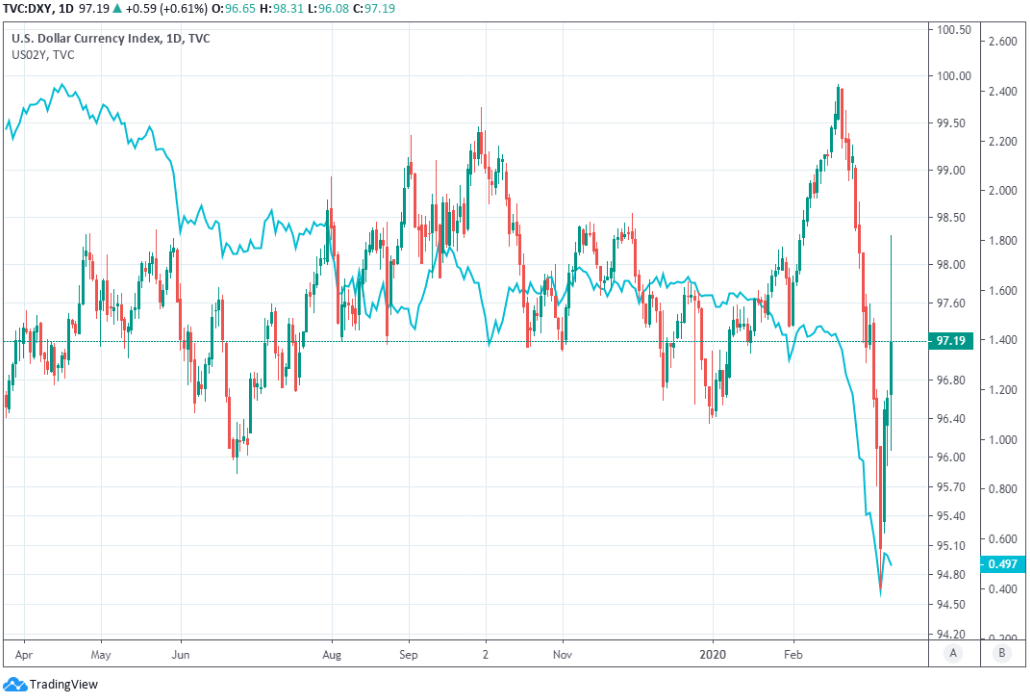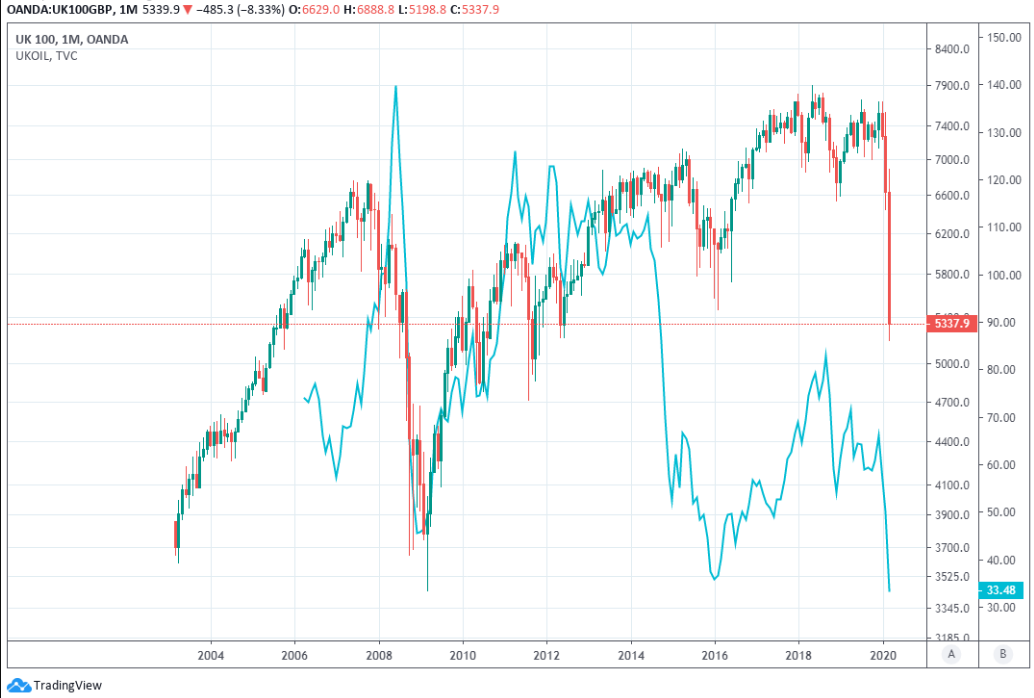Dollar Unwinds Sweeping Gains after Federal Reserve Launches "QE4"
- Written by: James Skinner
-
- NY Fed steps into risk sell-off with huge liquidity operation.
- Fed puts $500bn on a plate and market takes just $78.4bn.
- BUT $60 bn bill purchase extended across entire yield curve.
- Fed's $60bn buy up is QE4, says Pantheon Macroeconomics.
- Say's Fed can't tighten in April so QE will have to continue.
- Comes as stock markets collapse, amid viscious USD surge.
- After coronavirus gains momentum, disprupts Europe, U.S.

© The White House
- GBP/USD Spot rate: 1.2578, down -1.86% today
- Indicative bank rates for transfers: 1.2191-1.2279
- Transfer specialist indicative rates: 1.2342-1.2417 >> Get your quote now
The Federal Reserve (Fed) has launched a fourth round of quantitative easing, according to Pantheon Macroeconomics, in the wake of a savage stock market sell-off and a viscious surge in Dollar exchange rates that might now be liable to further unwind as the penny drops in Europe on Friday.
Thursday's near-2% surge by the Dollar Index was partially unwound ahead of the North American close after the Federal Reserve Bank of New York stepped into the fray in an apparent attempt to catch a falling knife. The bank put eye watering $500 bn clips of of one-month and three-month liquidity on the table, and many may have been surprised when only $78.4bn was taken given earlier concerns in some parts about liquidity.
The New York Fed's actions were a classic example of the 'Fed put' in action, with many stock markets having fallen more than 10% in the worst day of trading for some since Black Monday of 1987, but the bank did more than just step in and provide liquidity on Thursday. At the same time as it put the eye watering $500 bn on the table, it also restructured the terms of another 'open market operation' that was already planned to run from March 13 until April 13.
Above: Pound-to-Dollar rate shown at hourly intervals alongside 2-year U.S. government bond yield (blue).
The $60 bn operation was originally intended to buy three-month U.S. treasury bills as part of what is a routine maintenance operation for the financial system, although the Fed has now chosen to extend the offer to include treasuries from across the so-called yield curve so the purchase will "roughly match the maturity composition of Treasury securities outstanding." Some say that's called "quantitative easing", which isn't normally kind to the currencies subjected to it.
"QE4 is here. This is a world away from the bill purchases, which effectively just allowed banks to swap bills for reserves at the Fed. This action will offset the inevitable downward pressure on money supply growth as economic activity contracts. It should weaken the dollar and raise asset prices, other things equal. They won’t be, but these actions should limit the damage,” says Ian Shepherdson, chief economist at Pantheon Macroeconomics.
Investors appeared to flock into U.S. (and Canadian) treasury markets over the course of Thursday, with yields falling sharply, at the same time as they sales of bonds forced yields higher in Europe after a European Central Bank (ECB) press conference in which Christine Lagarde said the European Commission would be holding a fiscal policy focused press conference on Friday.
Above: USD/NOK rate shown at hourly intervals alongside 2-year U.S. government bond yield (blue).
Those bond market moves came alongside a viscious surge by the Dollar that prompted the Pound-to-Dollar rate to fall -2.3% back to October 2019 levels near 1.25, in the worst day of trading for the British currency since the October 2016 flash-crash. The Dollar made awe-inspiring gains over some currencies, notably the Norwegian Krone, while stocks were hemorrhaging capital with trading on some indices temporarily suspended due to the severity of losses.
"This is a full-blown crisis response operation, intended to make it abundantly clear that the Fed will not allow liquidity to dry up," Shepherdson says. "It’s inconceivable to us that the Fed will not extend these operations; they can’t do anything which reduces policy accommodation, even at the margin."
The once high-yielding Dollar was brutalised last week after the Fed cut its interest rate by a sharp 50 basis points to 1.25% in a surprise move that appeared geared toward shoring up faltering investor confidence. Losses for greenback stemmed in part from mounting expectations the central bank would offfer up more stimulus on a plate before long, likely plotting a course for a 0% interest rates that would crush what was left of the Dollar's yield.
Above: Dollar Index shown at daily intervals alongside 2-year U.S. government bond yield (blue).
Pantheon Macroeconomics says that stimulus came this Thursday and that Chairman Jerome Powell will formalise it in the 18:00 announcement of the next policy decisions next Wednesday. And if investors are of the same view when Europe wakes up on Friday then the greenback might suffer renewed losses ahead of the weekend, although that's far from guaranteed and forecasts can reach their sell-by dates quickly in times like the present.
"The Fed will be monitoring these developments carefully and will be speaking with banks as to the best measures to address it – e.g. much larger and longer-term USD repo operations. Or more likely, as the guardian of the world’s financial system, the Fed will be looking at a permanent liquidity add by re-starting quantitative easing," says Chris Turner, global head of markets and regional head of research for UK and CEE at ING in a Thursday research note.
The global flight to the perceived safety of the bond markets came as investors expressed disappointment with a European Central Bank response to a growing coronavirus crisis that's seen some countries all but close their borders to travellers from Europe. The virus has already seen 60 million Italians subjected to an almost-China-style 'lockdown,' and Spanish officials were reported to have considered similar restrictions for Madrid on Thursday.
Above: FTSE 100 index shown at monthly intervals alongside Brent crude oil futures price.
French President Emmanuel Macron said Thursday the virus was having a severe impact on the French economy when announcing the closure of all educational establishments in the country. This was after Denmark sent public sector workers home and closed schools as well as universities. The Nordic country is trying to prevent the health system from becoming overloaded while also seeking to protect the nation's weakest and most vulnerable citizens through this and other forms of 'social distancing.'
That term 'social distancing' is now in increasing use in the UK and all other major economies of Europe, if-not the world, including in the U.S. where the New York City Mayor Bill de Blasio declared a state-of-emergency on Thursday,
"For most of today, USD funding pressures were building, and with them the case for spot USD as a haven. A blow-out in basis in theory could offset the move lower in US yields if it were big enough," says Elsa Lignos, global head of FX strategy at RBC Capital Markets. "We don’t think this can turn around risk sentiment – it can’t prevent the upcoming slowdown in consumption and economic activity. But it does mean that financial markets don’t need to hoard liquidity in the way consumers have been hoarding tissue paper and pasta."














